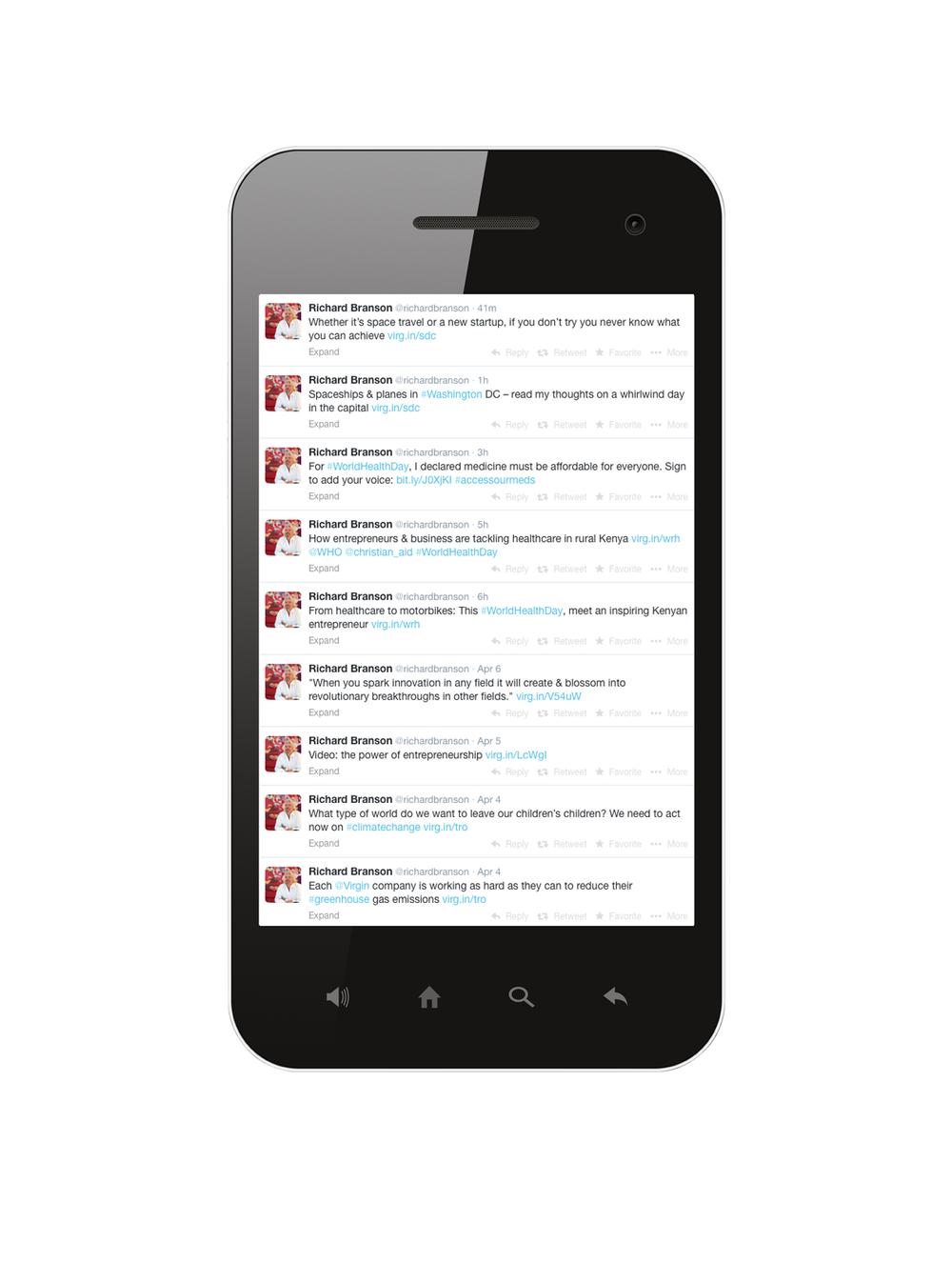According to the Chartered Institute of Marketing (CIM): “Marketing communications are the tools a company uses to deliver a range of promotional messages to its target markets.”
However, this was in 2009 and things have moved on a great deal since then. Although marketing communications are still the tools a company uses to deliver its promotional messages, they’re no longer limited to this definition. Marketing communications have evolved, and continue to evolve within a revolution of change where traditional boundaries are blurred. Nowadays, in the era of social media, marketing communications – whether you like it or not – also encompass what your customers are saying about you online.
Our approach has therefore had to evolve in terms of the way we listen to staff, customers and potential prospects – the way we must, today, open up a two-way dialogue to make our audience look, listen and react in a positive and mutually beneficial way.
It’s a manager’s responsibility to understand this evolution and lead this dialogue. Richard Branson is a great example, in that he reaches out to customers on social media for real-time conversations about how to improve his companies. He uses the full range of social media: blogging, asking questions, responding to comments on Facebook and Twitter to hear what people are saying on a daily basis about each of his businesses and each brand – the good, the bad and everything in between.
At the time of writing, Branson had 3.97 million followers on Twitter, over 4 million followers on LinkedIn – four times more than Barack Obama and over twice as many as Bill Gates – and over half a million monthly visitors to his blog. Over 6 million people had him in their circles on Google Plus and he had 1,078,865 ‘likes’ on Facebook.
By engaging on, say, Facebook or Twitter, you can position your brand to showcase your values in a subtle but positive way. A quick look at Branson’s Twitter feed, for example (right), shows how within a window of less than 24 hours, he touches on core subjects that lie at the heart of the Virgin brand and makes you feel good by association.
However, although social media is the dominant force in marketing today, as Gary Vaynerchuk explained in his keynote speech at the IHRSA Annual Convention in March, the fitness industry is “marketing like it’s 2004”. It’s still using conventional advertising methods like fliers, newspaper advertising and billboards which, he says, are not the way to reach prospective members in 2014 (see http://lei.sr?a=x6u1r). These media may remain relevant for some audiences – older people, for example – in which case the key is to fully integrate every element of your campaign so the message, benefit, call to action, tone of voice and brand essence are consistent across the board.
However, Vaynerchuk believes large swathes of the sector are currently using marketing methods that are obsolete when it comes to younger people – who include the gym members of the future – and that clubs need to focus not only on Facebook, but also on up-and-coming social media like Instagram, Vine and Snapchat.
What’s your USP?
When it comes to the marketing messages we put out there, the reality is that most things have been said before. The big difference now is that we have a vastly greater range of channels – including Facebook, Twitter, YouTube and Pinterest – that allow for direct communication with staff, members and prospects, giving instant feedback in real time, 24 hours a day. Navigating all the possible channels can be a challenge.
But before you even select your media channels, you must define your message based around your ultimate goal(s). For example, you might want to promote membership benefits, specific time-scaled events or special offers. Alternatively, your aim might be a more complex, long-term underpinning of values to support your brand.
Crucially, managers must realise that having excellent marketing communications is not the total answer. Organisations often repackage their brand without depth in an attempt to gain customer loyalty, trying to appear different in some way to stand out in a crowded marketplace. But the changes are often superficial – a veneer which does not last.
As Albert Einstein observed: “The definition of insanity is to keep doing the same things and expect a different result.” Organisations cannot simply do the same thing, packaged up in a different way with different marketing messages, and expect customers to be won over and see them differently in the long term. Advertising and marketing can’t ultimately disguise an inadequate product. Rather, marketing communications should be based on a genuine USP, so the first step is to identify or create a USP that stands out and stacks up.
With this in mind, tempting as it might be to jump on the bandwagon of social media, it’s important that organisations don’t do this – indeed, don’t embark on any form of marketing communication – without understanding the substance behind their message and the vision of they’re trying to achieve.
Who are you talking to?
Once you’ve worked out what you want to say, the simplest way to gain customer loyalty is to be really honest in the way you talk to customers, communicate with them and deal with them – actually showing them you care, not just telling them. This must happen every minute of every day of every year; the moment you stop doing this, you start to lose customer loyalty.
I’ve been involved in marketing communications for many years and the key message I’ve never deviated from is this: clubs must treat all customers as individuals at all stages of the relationship-building process. Once they stop doing this, the customer becomes a number and effective communications will become impossible.
In the era of social media, treating members as individuals has become even more important. Customer databases are still important to identify segments within your membership base, but with social media communicating on a one-to-one basis in real time, it’s hard to update your database to a level that will offer sufficient market intelligence.
That said, blogs can be used to encourage an exchange of information based on customer experiences, and can help create a real sense of belonging. They can also naturally start to ‘migrate’ user groups of your customer base into clearly definable segments such as: elite extremists, recreationalists, weight loss, rehab and newbies.
The majority of prospects should also fall within your definable user groups and, once identified, need to be filtered with an appropriate message or hook that meets their individual needs. This message should then be communicated to them using a range of methods, including personal contact. You can then start to build a dialogue with them, which should develop into a tangible relationship from which to solicit information to create a personalised offer that matches their needs. This filtering process requires patience and very clear sales and interpersonal skills among those responsible for the process.
Communicate the message
Once you’ve worked out what you want to say, to whom, and using which media channels, it’s time to get creative. Whether on Twitter or in a poster ad, the way you communicate your message must be succinct and very clear.
For example, the most memorable advertising campaign of all time, according to the Outdoor Media Centre, was Wonderbra’s famous ‘Hello Boys’ campaign that was launched over 20 years ago and still stimulates discussion and controversy despite comprising just two words and one image.
The designers knew they had less than three seconds to capture attention, create desire and make people want to know more; given the proliferation of marketing messages hitting us every day thanks to the likes of social media, we’d be lucky to have that long today. As Vaynerchuk said at IHRSA: “We’re living in the biggest cultural shift of all time. You need to get people’s attention in the noisiest world we’ve ever been in.”
An uncluttered approach also helps ensure consumers will spot ‘signposts’ to access further information should they require it – a telephone number, website, social media source or a venue.
Importance of staff
But customers and prospects aren’t the only key audiences for marketing communications. If health club managers are serious about delivering great customer service, they must realise that staff are equally important: every single member of staff has to understand and buy into the core values of the company, with a common culture and belief system established in the workplace based on kindness, trust, mutual support and a desire to create great customer experiences. Without this, all marketing messages simply become insincere words repeated from staff member to staff member.
Sadly, however, gym staff as an audience are all too often neglected in a marketing strategy, which must begin with recruiting the right people to represent the brand in the first place. In reality, management fails to recruit the right people, often fails to train the right people, and when they do train them, they often fail to source the best type of training for them and almost certainly fail to measure the actual effectiveness of this training.
If we want staff to communicate our marketing message with customers, the process must start with senior executives of the company. People have to be recruited who embody the company ethos; they have to be trained; and every single member of staff has to understand and be able to communicate the message that management has set out for the company.
Leading from the front
Having great leadership is therefore key to creating world-class marketing and marketing communications. These need to be strategically planned into a campaign where every element supports the same consistent message, and where all staff have bought into the vision.
Keeping your message and your values consistent is hard, but managers must understand that – if they fail to do this – customers will lose faith in the brand and spend elsewhere.



























































